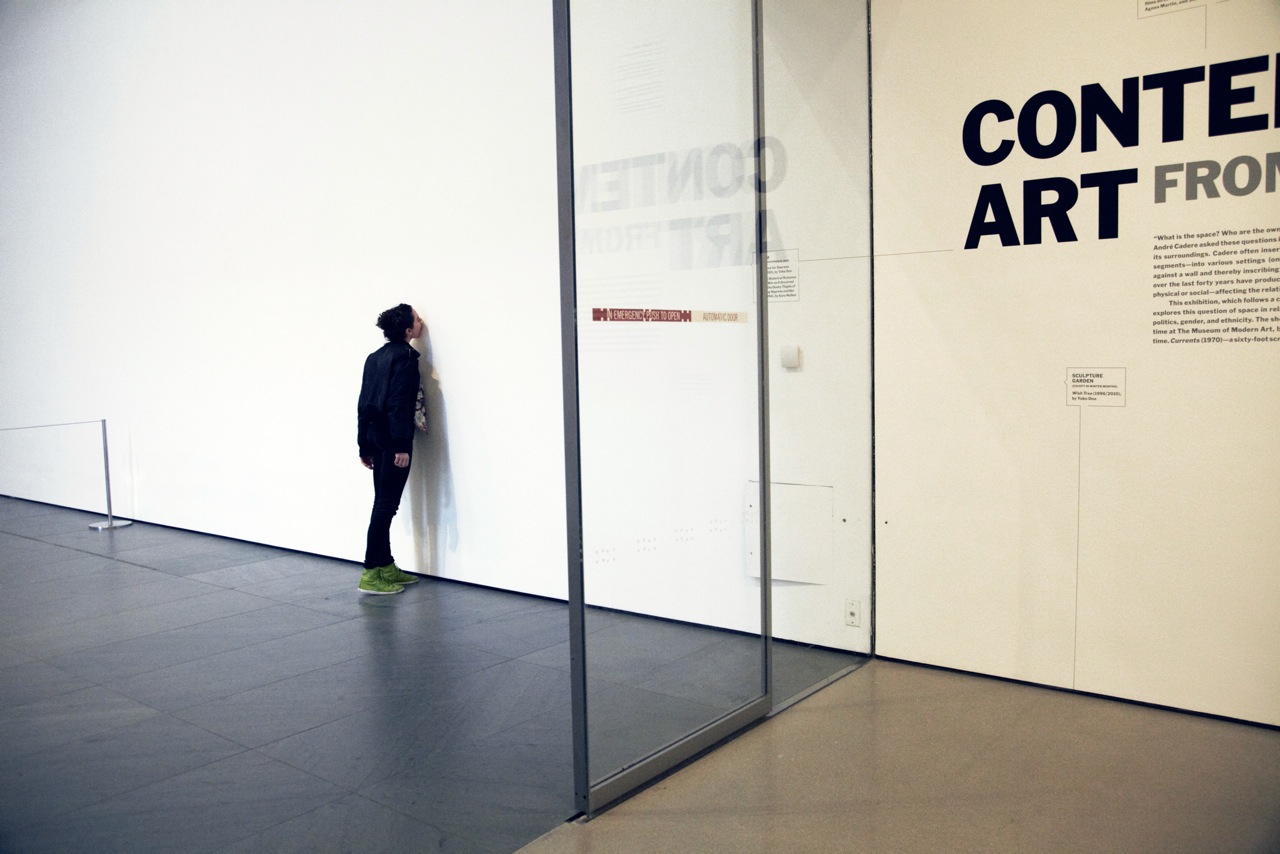Manhattan version (1989), Amsterdam version (1990), Karlsruhe version (1991), Computergraphic installation by Jeffery Shaw, with Dirk Groeneveld. Collection of ZKM-Medienmuseum, Karlsruhe, Germany.
This is a very exciting work by multi-media artist Jeffery Shaw. The interface is not foreign to any user, it is simply a bicycle. Hop on and cycle through Shaw’s world in the screen before you. From the video recordings of participants on YouTube, I can see that it kind of shows a cityscape while you are exploring, only that the buildings and infrastructure have been replaced with text.
Later on I found out that each of the cities named in the titles are what the participants are exploring. The artist has taken the actual maps of these cities and grafted them into his virtual reality, that is the texts we would see. We can read those and we can also listen to the narration that is going on. The Manhattan version features narration by President Trump. There are also monologues by ex-Mayor Koch, Frank Lloyd Wright, a tour guide, a confidence trickster, an ambassador and a taxi-driver.
The interface like I mentioned is very apparent and needs no explanation. What is interesting though is that you really need to put in the effort to cycle for it. Every choice you make, your speed, direction as well as how you read the world, whether by text or through the audio, will become a highly spontaneous mixture of meanings and understandings. And in this cross-section of sensory experience, the user is faced with both the mundane and the historical.
That is what makes this a very meaningful and compelling form of “narrative interaction” and definitely make a significant note for my research on this topic. Although the experience will probably be heightened for a participant who have been to those cities or lived there. Simply because of the cultural interactivity that will transpire as a result of this sort of mapping that happens through the use of the contraption. So perhaps interactive narratives might require the artist to be more conscious of for whom he designs the experience for.
You may view Shaw’s work here on his website: http://www.jeffrey-shaw.net




 Maria Anwander’s act of french kissing the exhibition wall at MOMA after she stuck the label. The old man contemplates the work as did all the other unsuspecting visitors to the gallery.
Maria Anwander’s act of french kissing the exhibition wall at MOMA after she stuck the label. The old man contemplates the work as did all the other unsuspecting visitors to the gallery.